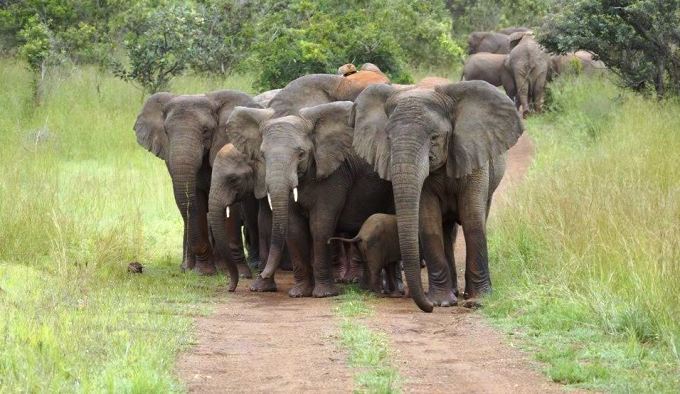
Animals in Akagera National Park enjoy safety and the Rangers are highly trained
If animals had a choice to make, then Rwanda’s Akagera National Park would be selected as their best home.
The aerial census conducted since 2013 up to 2015 found that the population of herbivore animal species has increased to 12,275 from 7892 animals representing a 55.5% rise.
Akagera national park gazetted in 1934 is an extensive area covering 1,200 km² in eastern Rwanda, protecting animals and vegetation in three eco-regions – Savannah, mountain and swamp.
According to park officials, the growing animal population is attributed to reinforced security and training of rangers.
The population of elephants increased to 90 units from last year compared to 88 in 2013 when the census started. Despite a slight increase in this period of review, the two previous years the elephants population had tripled increasing from 27 units.
Buffaloes slightly increase to 2567 units from 2093 units in the period under review, but in the previous census, they were below 1000 units.
For the Lions introduced in the park only last year have already doubled from 7 to 15 currently, despite one loss of an adult lioness.
Other animals the census covered include; giraffes, eland, roan, Waterbucks, Zebras, Topi, Impala, Warthog and Hippopotamus.
Of all these animals, the Buffalos, Waterbucks, Zebras, Topi and Warthogs have greatly increased compared to their population in the period 2010-2013.
Moreover, the population of roan antelope, a specie that in 2002 was feared nearing its extinction is rather recovering.
According to Akagera National park management, this increase in numbers is generally attributed to the overall management of the park under the Public Private Program agreement with African Parks, since 2010.
Reinforced security and training of law enforcement staff (rangers) is underlined as the key of the success in this sector.
“So much has been done but initially law enforcement and securing the park was a priority. Poaching dramatically reduced in the past few years,” Sarah Hall, the Tourism and Marketing Manager of Akagera Management Company told KT Press today.
“There has been extensive training and development of law enforcement staff that graduated last Saturday after training on tracking skills from Malawi, Kenya and Zimbabwe.”
Hall also said the number of visitors have remarkably increased from 15,000 visitors in 2010 to 32,000 in 2015 which also amplified the park revenue up to six-fold.
Rwanda is celebrating the increase in numbers of animals, while in September this year, the Wildlife conservation society report revealed that by 2020, 2/3 of wild animals in the world will disappear due to human activities.
The tragedy, the report reads in part, will mostly affect countries in development. Neighbouring countries like Kenya are cited in the report but Rwanda will be safe.



1 comment
[…] then animal populations in the park have increased by more than 50 percent, according to a 2015 aerial census, and poaching has dropped, thanks to better enforcement and improved relations with surrounding […]
Comments are closed.